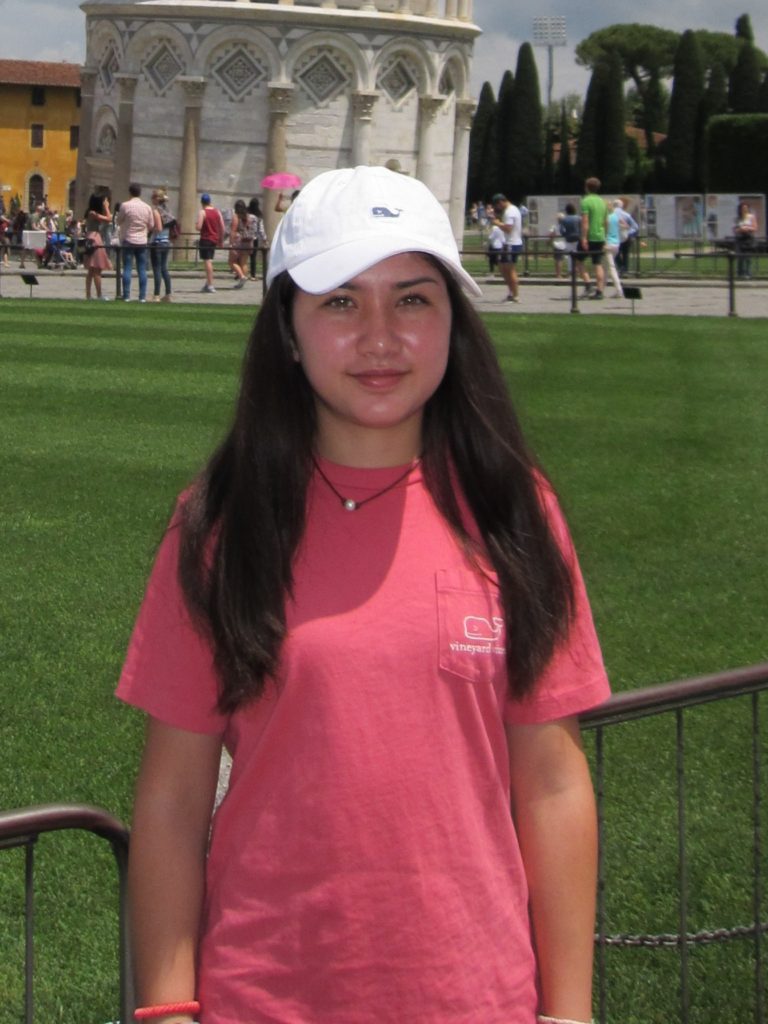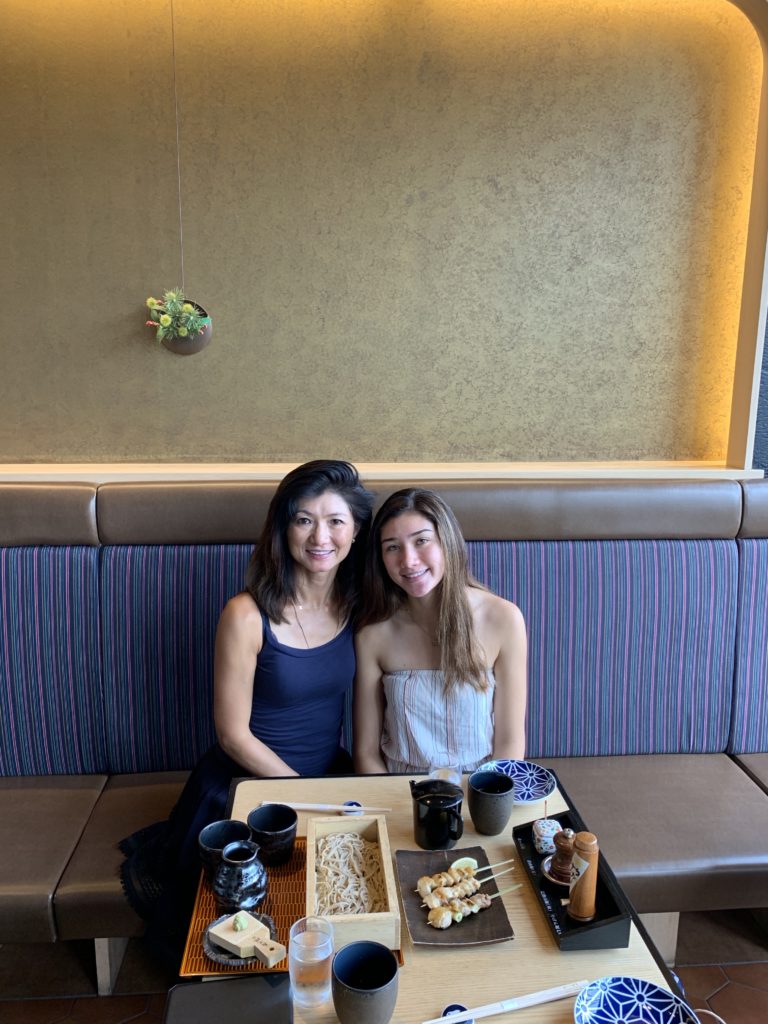Until fourth grade, I had always been one of the tallest girls in my class. However, that year my parents noticed that my growth suddenly slowed. They immediately began to schedule appointments with various doctors to figure out the reason, all without success. The doctors all insisted that this was merely a phase and that I would continue to grow. Despite countless blood tests, they were unable to identify a reason for my lack of growth. After many more unsuccessful visits that took us all the way to New York, we reached a turning point when we were referred to the Children’s Hospital of Philadelphia (CHOP). After a year of testing at CHOP for one unlikely disease after another, a pediatric endocrinologist finally checked my cortisol level, which no one had suggested before. That was it. My cortisol levels were very high, confirming her suspicion that I had Cushing’s disease. Unlike the “typical” Cushing’s patient, I had not experienced excessive weight gain, which is usually the classic indicator of Cushing’s. My most noticeable symptoms were lack of growth and round cheeks, which is why it had been so difficult to diagnose.
However, our journey didn’t end at CHOP. Next we were referred to the National Institutes of Health (NIH) to confirm the Cushing’s diagnosis through more specialized testing. After the diagnosis was confirmed it took a few weeks of blood tests, X-rays, and MRIs to determine where in my body the tumor causing excess cortisol was located. The tumor turned out to be in my pituitary gland. It was clear that I would have to get transsphenoidal surgery (TSS) to remove this tumor, because leaving Cushing’s untreated would not only inhibit my growth, it can also be fatal. This led us to our next step of figuring out which hospital and team would be the best to treat me. This was another long process and my family and I met with neurosurgeons in New York, in Bethesda, MD at NIH, and in Virginia. We decided that NIH was the best choice since they have a team of doctors that specialize in Cushing’s, are leading researchers in the field, and are located within driving distance of us. From my first visit to NIH, I felt reassured by the skill and knowledge my doctors demonstrated and how they cared about their patients; I felt sure that I was in good hands. By this time, I was in seventh grade and we scheduled my surgery for that summer, before I entered eighth grade.
The day before my surgery, I was not allowed to eat or drink after midnight. When I arrived at the hospital the next day, the doctors drew seventeen vials of blood for various tests. I was very used to this from the past few years, but this was the first time that I felt queasy because so much was drawn. I still remember my last few seconds before being put under anesthesia, when I was talking to my anesthesiologist whom I remember as being very friendly and making me feel relaxed.
Post-surgery, I woke up in the ICU with a catheter, a plastic mask over my nose that blew out moist air and packing in my nose. My stuffy nose limited me to breathing through my mouth, and both were very swollen. That day as I took my first few steps after surgery, I was so weak that my vision went pitch black and I stumbled blindly when I stood up to get a drink of water. However, by the next day I was stable enough to be transferred to the pediatric day hospital. Two days after surgery, I was strong enough to be able to walk a bit by myself for the first time without getting dizzy, although I was required to use a wheelchair to get around. I took lots of naps throughout the day, and the nurses came to check my vitals and draw blood periodically. Some of my friends came to visit me and we explored the vast and amazing hospital. I was required to stay at NIH for ten days until I was stable enough to go home and to ensure that there had not been any complications from surgery.
While I had not been worried about the immediate risks of the surgery such as diabetes insipidus, it had been naïve of me to think that after surgery everything would be back to normal. Physically, the success of the surgery was clear. With a much lower cortisol level my cheeks became less puffy and round and I grew four inches taller that year. It wasn’t until school started that I realized that despite this, I had a long way to go to recover. My cortisol level actually dropped to near zero and I had to take medication to bring it up to normal levels. I also had to take other hormone replacements such as to regulate my thyroid. I also needed to carry around a cortisol injection in case I experienced some type of trauma and had to wear a medical bracelet to identify my low cortisol levels. However, the cortisol replacement wasn’t that effective and as a result, I experienced fatigue so extreme that I often physically couldn’t keep my eyes open. This fatigue would come in waves during my classes throughout the day and I was constantly falling asleep in class. I tried different strategies such as getting up to get a drink of water but as soon as I sat back down I was just as tired. So, there wasn’t much I could do to cope besides sleeping as much as possible, which meant sleeping in often and coming to school late, and often just falling asleep in class. Unsurprisingly, my fatigue took a severe toll on my grades and I went from a mostly A student to mostly Bs that year.
By the time I entered my freshman year of high school, I had mostly recovered although I was still often very tired and still didn’t feel as if I was able to reach my potential academically. It wasn’t until the end of the year that the doctors at NIH finally declared that my thyroid hormone and cortisol levels had returned to normal and that I was fully recovered. By sophomore year I felt as if I had regained the energy that I needed to accomplish what I was previously capable of. My grades finally returned to normal and I was no longer falling asleep in class. Since my surgery, I have gone back to NIH a few times to participate in a study of post-surgery Cushing’s patients, which will hopefully help future patients. I would like to continue to do more to help Cushing’s patients and aid in medical research as well. Throughout this journey, I have been thankful to have the support of my family, friends, and of course the wonderful NIH team.
Recently, I was diagnosed with a recurrence of Cushing’s and had a second TSS at NIH, under the care of the same team. They wasted no time between diagnosis and surgery; everything happened in the span of a few months. The surgery seems to have been successful so far, and I am so grateful for the support and expertise of the NIH team once again. None of us had thought that we would be in this position only a few years after my first surgery, but there is no one I trust more to help me through this disease.
Sidenote from Lauren’s mom: I knew something was not right when Lauren first stopped growing. I was sure it wasn’t “just a phase” she was going through; it was something more profound than being a “late bloomer” as we were told by many doctors. Despite being dismissed so many times, my gut feeling told me not to give up. For four years, not one doctor would take an overall look at Lauren’s medical history and think about what the cause could really be. Refusing to take “no” for an answer, we kept taking Lauren to see different doctors and asking questions. Every time we met with a new doctor, we had to start over with bloodwork and repeat our story. It was emotionally and physically exhausting. It took us four years to meet someone at CHOP who finally thought of checking Lauren’s cortisol level and that’s how Lauren was diagnosed with Cushing’s. We will never forget the kindness that was shown to us at NIH and the support we received from family and friends.
Looking back, I’m not sure if we could have done things differently. I only wish that doctors, especially pediatricians, would listen to parents and trust their instincts instead of waving them away so quickly. To parents whose kids are newly diagnosed with Cushing’s, Lauren and I are happy to share our experience with you. Feel free to reach out!
(Editor’s note: if you would like to send Lauren or Li a message, please e-mail it to [email protected] and we’ll forward it on to them)







Sorry, comments are closed for this post.